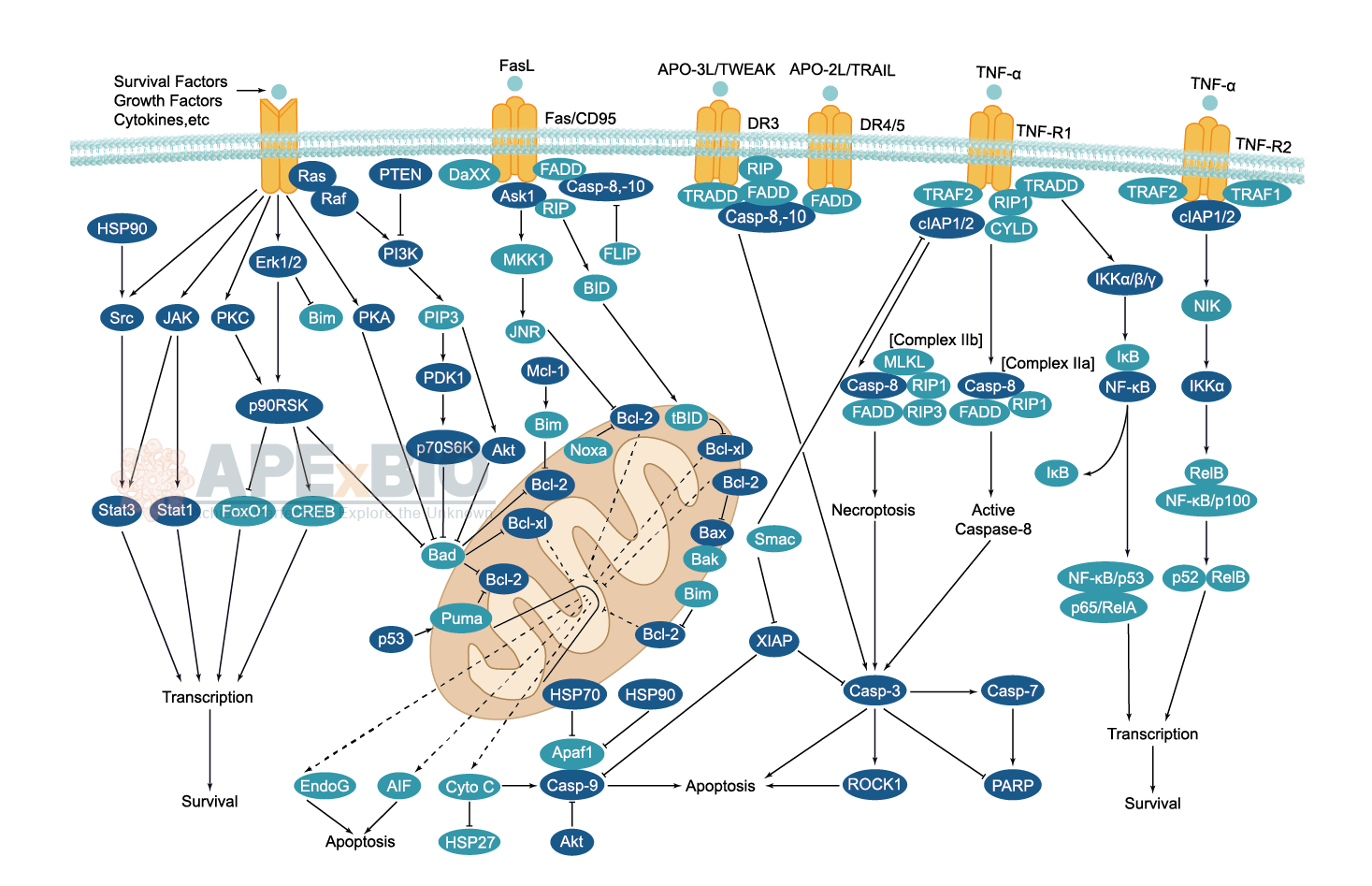Apoptosis
Apoptosis, also known as programmed cell death, is rigorously controlled process of cell death that leads to phagocytosis of unwanted cell. It is triggered after sufficient cellular damage and activated through extrinsic or intrinsic pathways. The intrinsic pathway is mainly occurs via release of cytochrome c from the mitochondria and regulates mitochondrial outer membrane permeabilization by Bcl-2 family proteins. The extrinsic pathway is induced by ligand binding to death receptor, such as Fas, TNFαR, DR3, DR4, and DR5. Caspases then cleave target proteins and nuclear lamins to promote DNA degradation, resulting apoptotic cells undergo phagocytosis. In addition, p53 has the ability to activate intrinsic and extrinsic pathways of apoptosis by inducing transcription of several proteins like Puma, Bid, Bax, TRAIL-R2, and CD95.
Some Inhibitors of apoptosis proteins (IAPs), such as XIAP/BIRC4 and Bruce/BIRC6, can block casapse activity through direct binding, while other IAPs, such as cIAP1/BIRC2, cIAP2/BIRC3, act as ubiquitin ligases that target caspases for ubiquitin-mediated degradation. Apoptosis is essential for growth, development and aging in multicellular organisms. Any alterations or abnormalities occurring in apoptotic processes contribute to development of human diseases, including cancer.
-
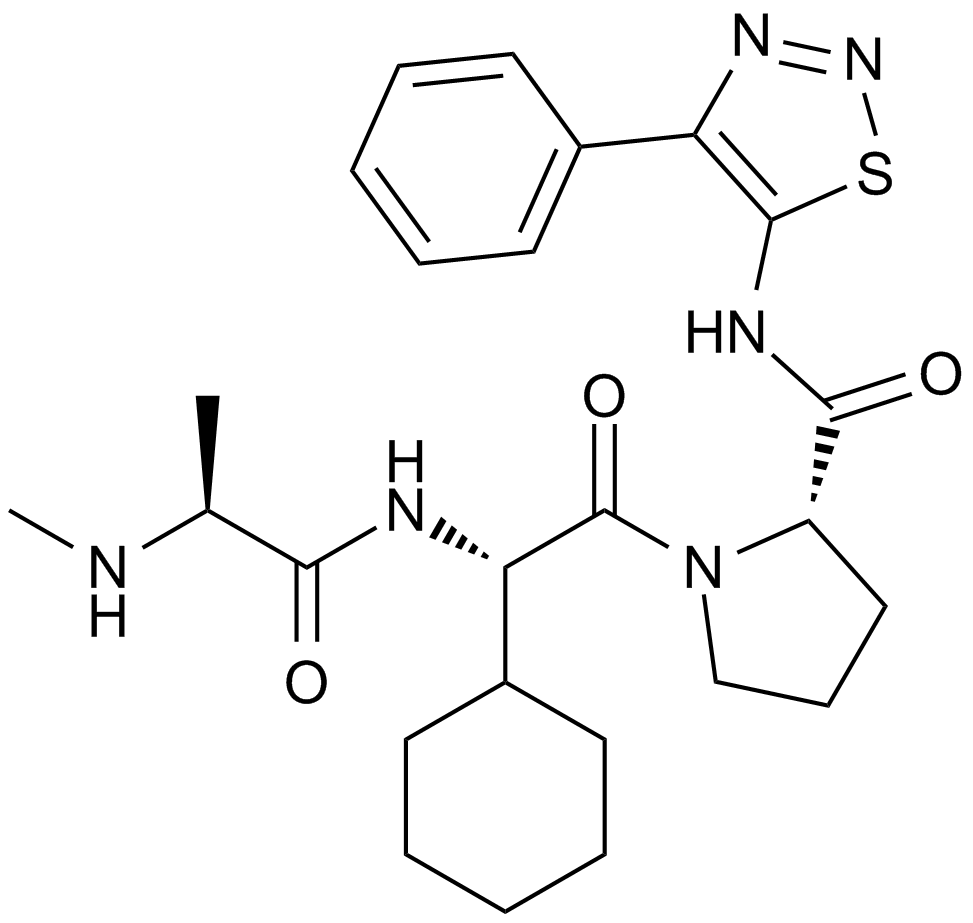 A4224 GDC-01522 CitationTarget: Inhibitor of apoptosis proteins (IAP)Summary: IAP antagonist,potent amd samll-molecule
A4224 GDC-01522 CitationTarget: Inhibitor of apoptosis proteins (IAP)Summary: IAP antagonist,potent amd samll-molecule -
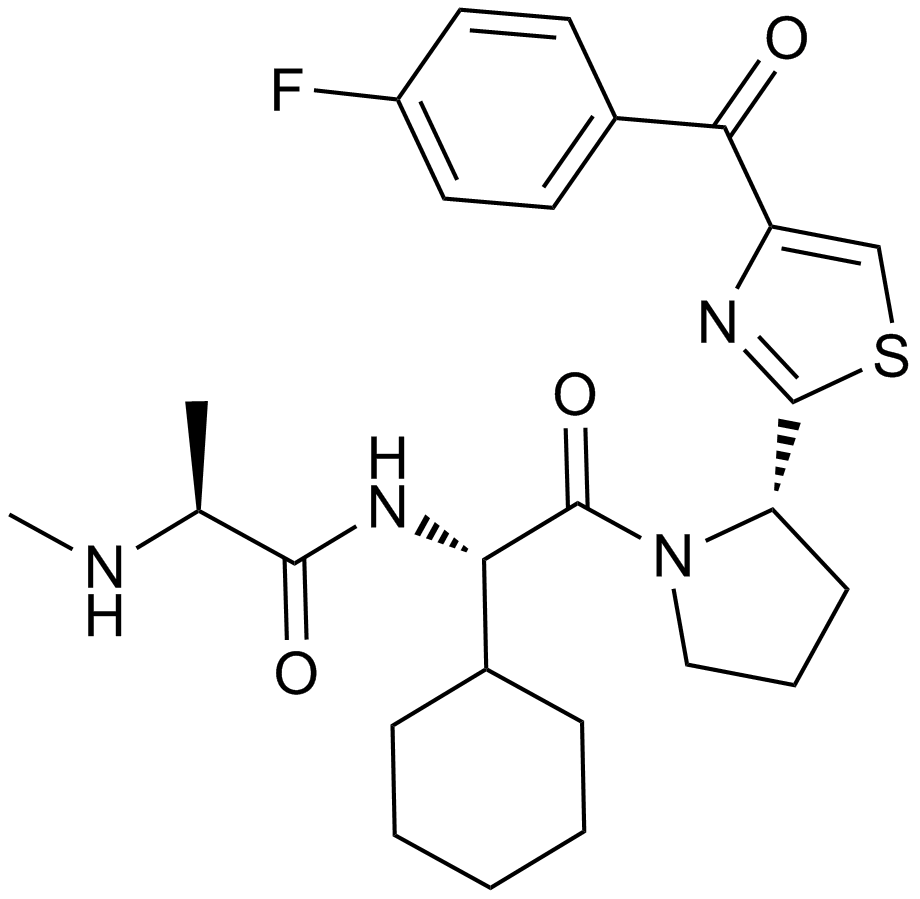 A3541 LCL1611 CitationTarget: Inhibitor of apoptosis proteins (IAP)Summary: Antagonist of IAPs inhibitor
A3541 LCL1611 CitationTarget: Inhibitor of apoptosis proteins (IAP)Summary: Antagonist of IAPs inhibitor -
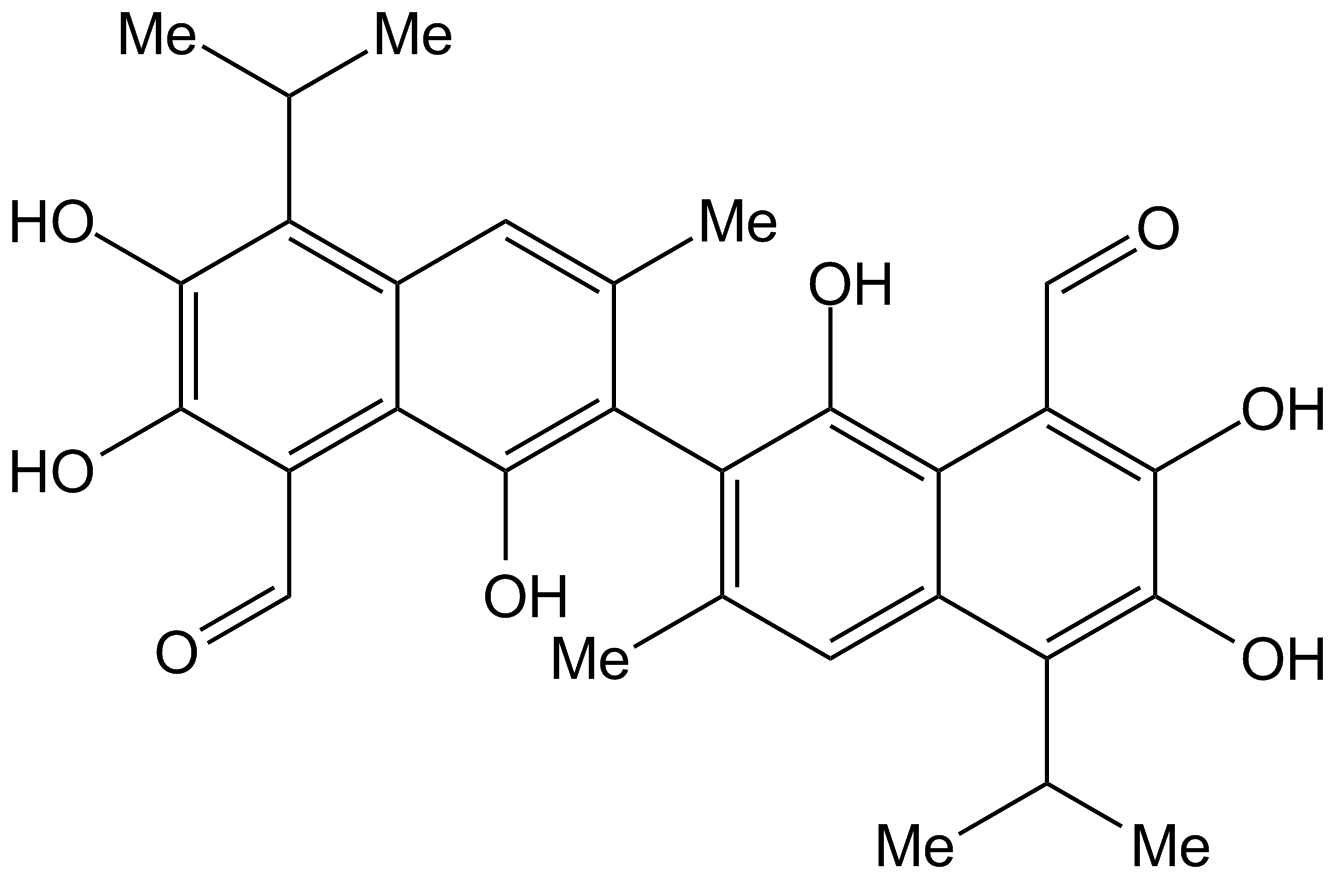 N2135 Gossypol2 CitationTarget: DehydrogenaseSummary: PAF inhibitor;anti-fertility and anti-cancer
N2135 Gossypol2 CitationTarget: DehydrogenaseSummary: PAF inhibitor;anti-fertility and anti-cancer -
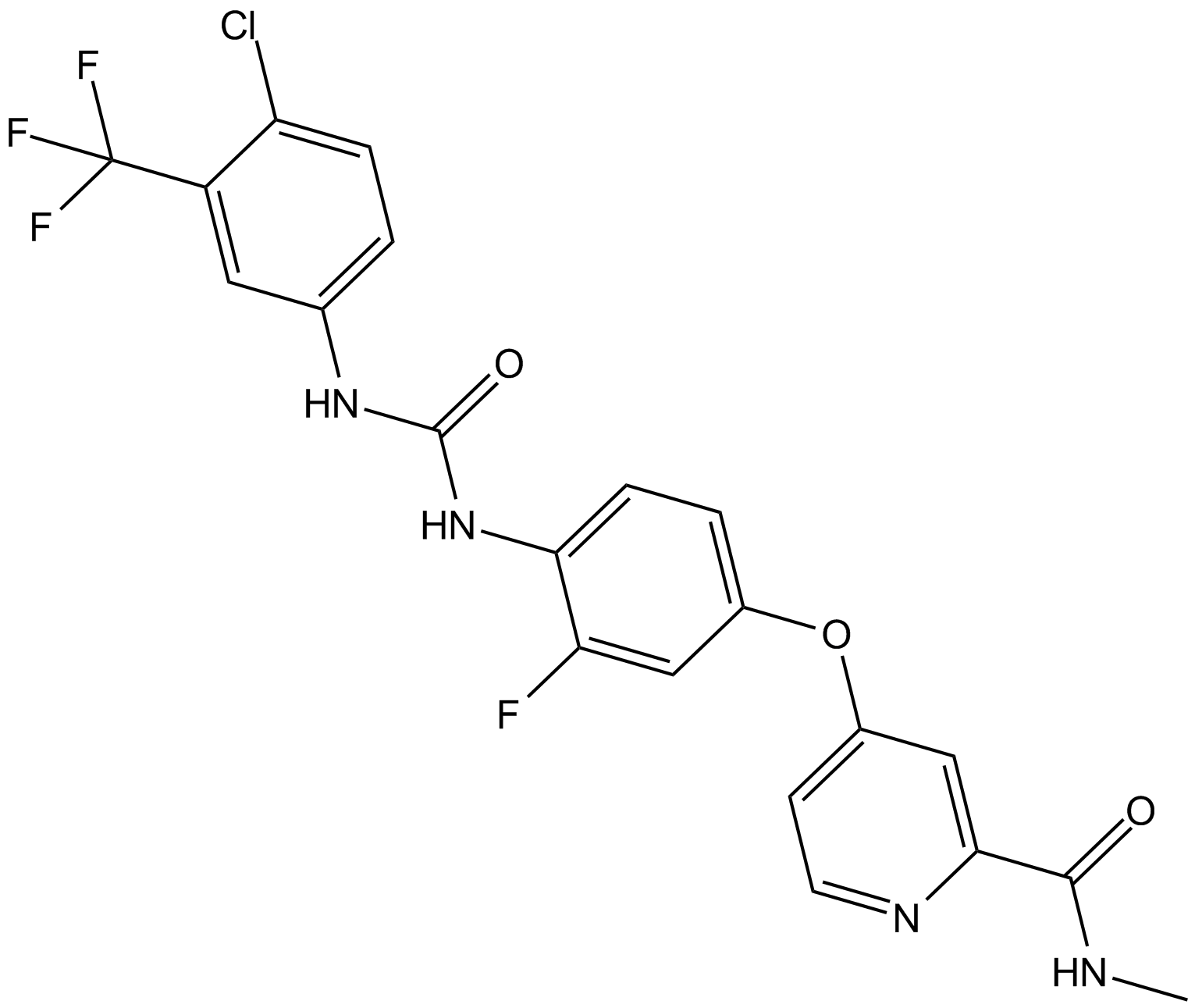 A8236 Regorafenib4 CitationTarget: Raf|VEGFR|PDGFR|c-Kit|RETSummary: Inhibitor of VEGFR/PDGFR/FGFR/mutant kit/RET/Raf-1
A8236 Regorafenib4 CitationTarget: Raf|VEGFR|PDGFR|c-Kit|RETSummary: Inhibitor of VEGFR/PDGFR/FGFR/mutant kit/RET/Raf-1


